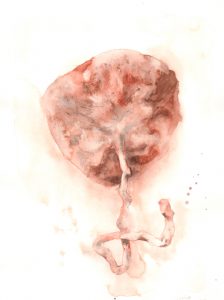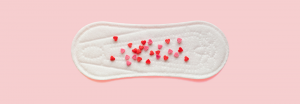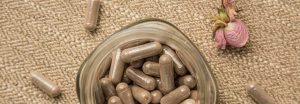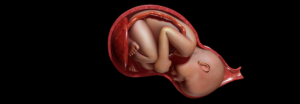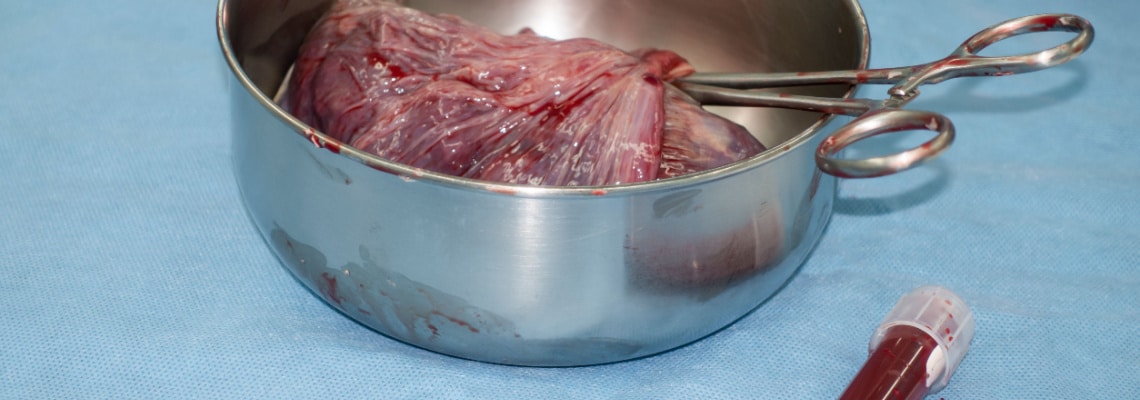
Mother and child are connected via the placenta. After birth, this organ is usually disposed of. However, more and more women have their own ideas about what should happen to their placenta. From a legal point of view, the mother can simply take it home after the birth. But how can the placenta be used afterwards? Actually there are different possibilities.
The Placenta
After fertilization, a germinal sac (blastocyst) develops. From this, the embryo develops, but also the placenta. This important organ adheres to the wall of the uterus because it contains parts of the mother on the one hand and parts of the child on the other. This disc-shaped organ is approximately 5 to 8 inches in diameter, 0,7 to 1,5 inches thick and weighs between 500 and 650 grams. In the center the umbilical cord is positioned. The placenta fulfills a number of tasks. On the one hand, it controls the growth of the embryo, provides the baby with nutrients and oxygen, and eliminates all waste products that the child’s circulatory system produces. In addition, the placenta is responsible for the production of hormones that are important during pregnancy. It produces the pregnancy hormone HCG and releases estrogen and progesterone. Mother and child are closely connected through the umbilical cord. During birth, the placenta is eventually expelled. This is also known as the afterbirth phase.
While in many countries the placenta is usually disposed of after birth, in countries such as the USA, for example, a veritable cult is practiced around this important organ. The placenta often finds its own use in a curious way.
Placentophagy
Some mothers choose to eat the placenta after giving birth and find very creative ways. The placenta is often boiled, made into a powder or even into a smoothie. In fact, there are also placenta cookbooks that offers “recipes” and ways of preparing the placenta. While this sounds weird and unsavory to many, some people are convinced that consuming the placenta offers many health benefits. Some women report more energy, help with postpartal problems, an improvement in milk production and a boost in the immune system. However, this practice is still very controversial among medical professionals because it is associated with health risks. When the placenta is contaminated, it can contain dangerous toxins, which are able to cause disease. Research shows cases where the baby was infected with Streptococcus B when the mother ingested the placenta. The infection can be transmitted to the child through breast milk.
Placena Encapsulation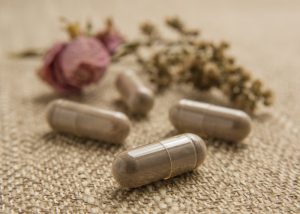
If you don’t want to eat the placenta just like that, you can also order a placenta encapsulation. During this process, the placenta is steamed, dried and ground up. After that, the powder comes in tablets or is filled into capsules. The mother can simply take these capsules after the birth. In principle, there are no well-founded studies on placentophagy, as a rule these are merely reports of experience.
Planting the Placenta
Some moms don’t go quite that far, but still have a connection with their placenta and don’t want it just being thrown away. One option is to bury the placenta in your own garden. Some cultures see this as a connection between the baby and the earth. The burial of the placenta was also seen as the child’s sacred connection with his place of birth or heritage. It should also confer blessing or protection for the child’s future. Some mothers choose to plant the placenta next to a tree to see how it grow with the baby.
Placenta Art
A placenta impression uses your baby’s placenta to create an impression on paper as a keepsake. The result is a work of art that looks like a tree, which makes sense since the placenta is sometimes referred to as the “tree of life.” Once the print has dried, families can frame it and have a beautiful memory. There are a few suppliers online who offer placenta artwork.
Placenta Jewellery
You may have heard of breast milk jewelry, an increasingly popular way for parents to commemorate breastfeeding. Placenta jewelry works similarly. It is intended to remind the mother of the pregnancy and childbirth. This jewelry is made by conserving a portion of the dried and ground placenta in resin to form a stone-like material, which is then set into a piece of jewelry. Rings, pendants or other things can be produced this way. A few capsules of dried placenta are usually required for this process.
Cosmetic Products
Strange but true: The placenta has long been used in cosmetics. In fact, the placenta is said to have a regenerating effect and is therefore considered an anti-aging agent. Placenta creams were not uncommon in the 1960s. Many swear by the health effects of such products. However, with the advent of AIDS, placenta use in the pharmaceutical and cosmetic industries largely disappeared. Today, however, there are products in which, for example, sheep placenta is used against wrinkles.
Placenta Nosodes
Placenta nosodes are enjoying increasing popularity among mothers. Many pharmacies offer the production. They are produced from the cells of the placenta and are considered homeopathically in the form of globuli. They can be used in various ways, e.g. for breastfeeding problems, infections or during teething. A pea-sized piece of your own placenta is often sufficient before production. After birth, a small portion of the placenta is placed in a special sample bottle. After that, it is sent to a manufacturer, which produces the individual placenta nosodes from the placenta within a few days.
Lotus Birth
But there is another possibility, such as Lotus Birth, which dates back to the American Clair Lotus Day. The special thing about it is that the baby is not separated from the placenta after birth, which means that the usual umbilical cord removal process is dispensed with. The umbilical cord is not severed, but your wait for the umbilical cord to fall off naturally, which also causes the placenta to shrink. This usually occurs about five to 10 days after birth. In practice, however, this method is difficult because the baby always has to be positioned and carried together with the placenta. There are no relevant studies on lotus birth. Because the placenta is made up of maternal and fetal tissue, proponents believe that cutting the cord too early could mean loss pain, so the process should be natural. There are also reports of happier, and more balanced babies. Other benefits: the child is said to have a stronger immune system and the risk of neonatal jaundice is reduced. However, this practice requires the placenta to be preserved daily to minimize the risk of infection, which is very time consuming. For this reason, lotus birth is rarely considered by most mothers.
Conclusion
There are many different ways to use the placenta after delivery. It is important for mothers who are interested in a certain method to obtain sufficient information. Each country has its own guidelines. Your midwife can also advise you on this topic. Basically, it is a very individual decision that every woman should make for herself.
